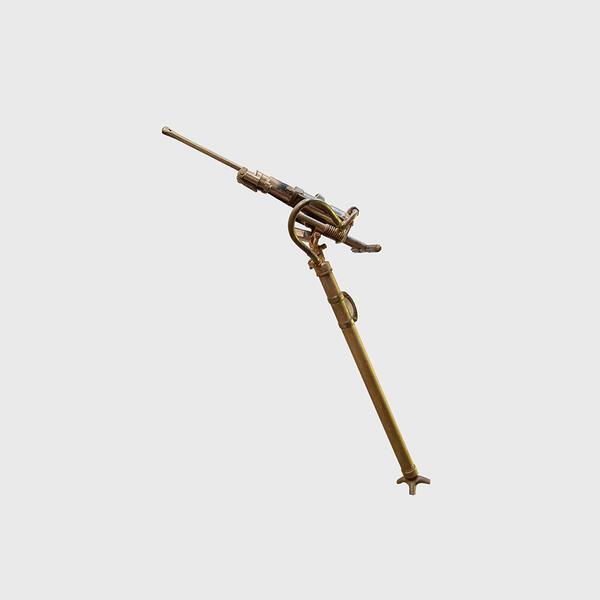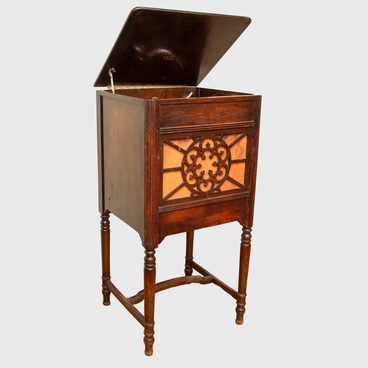Hammer drills PT-45 were used during the construction of the Pyshminsky Copper Electrolytic Plant in the 1920s — 1930s. This model is part of the collection of the Verkhnyaya Pyshma Historical Museum.
At that time, a mineral processing plant was erected nearby and the mines of the Pyshminsko-Klyuchevsky copper mine, which had been flooded during the Civil War, were restored. Thanks to these enterprises, in a few years the village of Medny mine became the city of Verkhnyaya Pyshma.
A hammer drill is a construction tool with a serrated end used for drilling holes in hard materials such as stone or rock. Initially, hammer drills were used by miners.
The first hammer drill was created in the 19th century. It operated using a flywheel and special clasps that lifted the rod attached to the piston. Then, under the action of a compressive spring, the rod fell down and hit the surface with force.
This hammer drill made boreholes — deep and narrow cylindrical holes in hard rocks. For soft rocks, other models were created that drilled holes by rotation rather than impact force.
Nevertheless, the inventors continued to improve the tool and look for ways to make the work of miners and builders easier. Therefore, in 1849 the first hammer drill appeared, which was powered by steam and water. It was assembled by the American designer Jonathan Coach, he used elements of a piston machine. Such a tool was convenient but cumbersome.
In 1932, the Bosch company presented the first electric hammer drill at the Leipzig trade show. It was similar to modern models: the toothed end rotated and, at the same time, the tool hit the surface. The name of the device literally translates as ‘Bosch hammer drill’. It soon became a household name for all rotary hammers that combined the functions of rotation and chiselling.
Bosch became a leading manufacturer of construction tools. For example, in 1981 it released a lightweight hammer drill weighing only two kilograms, and in 1984 a model with a built-in battery. In 2005, Bosch announced the world’s first cordless hammer drill.
At that time, a mineral processing plant was erected nearby and the mines of the Pyshminsko-Klyuchevsky copper mine, which had been flooded during the Civil War, were restored. Thanks to these enterprises, in a few years the village of Medny mine became the city of Verkhnyaya Pyshma.
A hammer drill is a construction tool with a serrated end used for drilling holes in hard materials such as stone or rock. Initially, hammer drills were used by miners.
The first hammer drill was created in the 19th century. It operated using a flywheel and special clasps that lifted the rod attached to the piston. Then, under the action of a compressive spring, the rod fell down and hit the surface with force.
This hammer drill made boreholes — deep and narrow cylindrical holes in hard rocks. For soft rocks, other models were created that drilled holes by rotation rather than impact force.
Nevertheless, the inventors continued to improve the tool and look for ways to make the work of miners and builders easier. Therefore, in 1849 the first hammer drill appeared, which was powered by steam and water. It was assembled by the American designer Jonathan Coach, he used elements of a piston machine. Such a tool was convenient but cumbersome.
In 1932, the Bosch company presented the first electric hammer drill at the Leipzig trade show. It was similar to modern models: the toothed end rotated and, at the same time, the tool hit the surface. The name of the device literally translates as ‘Bosch hammer drill’. It soon became a household name for all rotary hammers that combined the functions of rotation and chiselling.
Bosch became a leading manufacturer of construction tools. For example, in 1981 it released a lightweight hammer drill weighing only two kilograms, and in 1984 a model with a built-in battery. In 2005, Bosch announced the world’s first cordless hammer drill.



